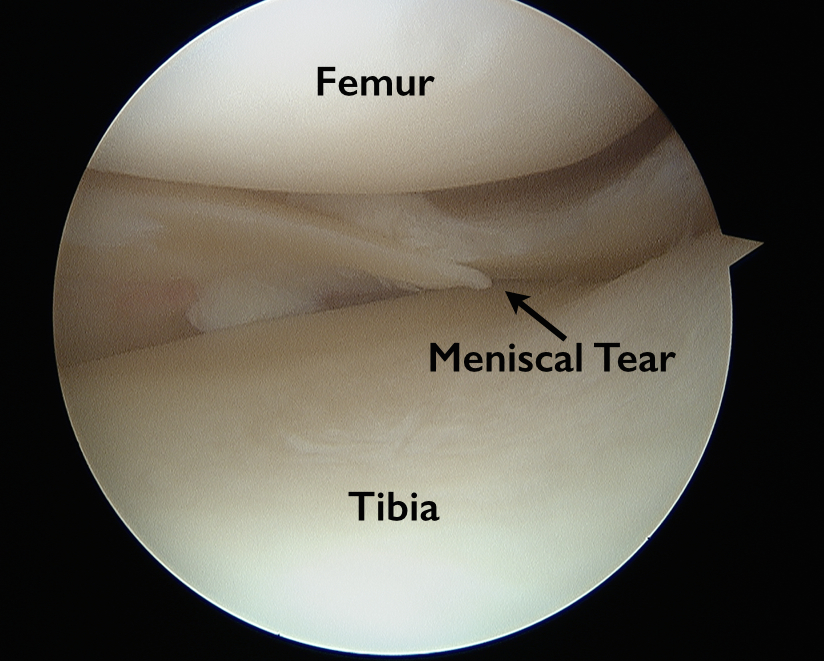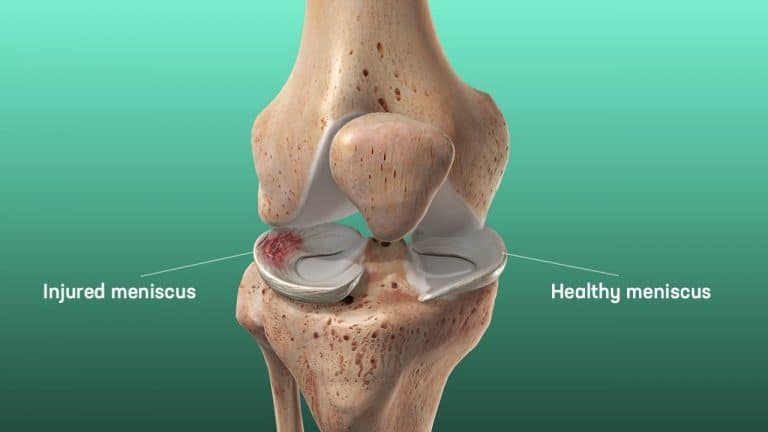Understanding the Meniscus and Its Functions
The meniscus is a vital component of the knee joint, consisting of two C-shaped cartilaginous structures (the medial and lateral menisci) that provide cushioning, stability, and shock absorption during physical activities such as running. These fibrocartilaginous structures, located between the femur and tibia, evenly distribute the load placed on the knee joint, reducing the risk of injury and wear on the articular cartilage.
Maintaining the integrity of the meniscus is crucial for pain-free running and overall knee health. Running on a torn meniscus can exacerbate the injury, leading to increased pain, swelling, and potential long-term damage. The severity and location of the tear, as well as the runner’s unique physiology, play a significant role in determining the feasibility of running with a torn meniscus.
How a Torn Meniscus Impacts Running
Running with a torn meniscus can significantly affect a runner’s performance and overall knee health. The symptoms and consequences of running on a torn meniscus may vary depending on the severity and location of the tear, but common indicators include pain, swelling, stiffness, and a limited range of motion. These symptoms can range from mild discomfort to debilitating pain, making it difficult to continue running or perform daily activities.
In addition to immediate pain and inflammation, running on a torn meniscus can lead to long-term damage and complications. The meniscus plays a vital role in shock absorption and load distribution within the knee joint. When a meniscal tear occurs, the affected area may become weaker, increasing the risk of further injury and accelerating the degeneration of the knee joint. Over time, this can result in osteoarthritis, a condition characterized by the breakdown of joint cartilage and the formation of bone spurs.
Can You Run on a Torn Meniscus? Assessing the Possibility
The feasibility of running on a torn meniscus depends on several factors, including the type, location, and severity of the tear. Generally, a minor tear affecting the outer third of the meniscus (the red-red zone or red-white zone) has a better chance of healing on its own, allowing for a possible return to running with proper care and rehabilitation. However, tears located in the inner two-thirds (the white-white zone) typically have a poor blood supply, making healing more challenging and increasing the risk of complications from running on a torn meniscus.
The type of tear also plays a significant role in determining whether running is advisable. Horizontal, oblique, or radial tears, as well as complex degenerative tears, may require more extensive treatment and a longer recovery period before returning to running. It is essential to consult a healthcare professional for a proper diagnosis and treatment plan, as they can provide personalized guidance based on the specifics of the injury and the individual’s running goals.
Alternatives to Running: Low-Impact Exercises for Injured Runners
While recovering from a torn meniscus, it is crucial to maintain fitness and cardiovascular health without exacerbating the injury. Low-impact exercises and cross-training activities can help achieve this balance, allowing runners to stay active while reducing stress on the knee joint. Some suitable alternatives to running on a torn meniscus include:
- Swimming: This full-body workout provides a gentle cardiovascular challenge without putting pressure on the knee joint. Swimming can help maintain fitness and improve flexibility and strength in the upper body and core.
- Cycling: Both stationary bikes and outdoor cycling offer a low-impact cardio option for injured runners. Adjusting the resistance and speed can help tailor the workout to individual fitness levels and knee joint tolerance.
- Elliptical Training: Elliptical machines provide a low-impact, weight-bearing workout that mimics the motion of running without the high impact forces. Adjusting the resistance and incline can help customize the workout to individual needs and abilities.
- Water Running: Also known as aqua jogging, water running involves running in deep water with a flotation device to maintain an upright position. This low-impact exercise provides a cardiovascular challenge while minimizing stress on the knee joint.
- Strength Training: Incorporating targeted strength training exercises for the lower body can help improve overall running performance and reduce the risk of injury. Focus on exercises that do not cause pain or discomfort in the affected knee, such as bodyweight squats, lunges, and clams.
When to Consult a Medical Professional: Seeking Guidance and Treatment
Consulting a healthcare professional is essential for obtaining a proper diagnosis and treatment plan when dealing with a torn meniscus. A medical professional can accurately assess the type, location, and severity of the tear, as well as provide guidance on the feasibility of running on a torn meniscus. Early intervention and treatment can help promote healing, reduce the risk of long-term damage, and expedite the return to running.
In some cases, surgical intervention may be necessary to repair or remove the damaged portion of the meniscus. Meniscectomy, a procedure that involves removing the torn portion of the meniscus, is a common surgical option for treating meniscal tears. However, it is crucial to weigh the potential benefits and risks of surgery, as meniscectomy has been associated with an increased risk of knee osteoarthritis in the long term. Arthroscopic repair, another surgical option, involves suturing the torn meniscus to restore its integrity. This approach may have better long-term outcomes but is typically reserved for specific types of tears in younger, more active individuals.
Regardless of the treatment approach, it is essential to follow the healthcare provider’s recommendations for rehabilitation and recovery. This may include physical therapy, exercises to improve strength, flexibility, and balance, and modifications to running technique or training schedule to minimize stress on the knee joint.
Preventing Meniscal Tears: Injury-Reduction Techniques for Runners
Implementing injury-reduction techniques and strategies can help protect the knee joint and minimize the risk of meniscal tears during running and other high-impact activities. By focusing on proper running form, strength training, and flexibility, runners can maintain long-term mobility and well-being while reducing the likelihood of experiencing a torn meniscus.
- Proper Running Form: Maintaining an efficient running form can help distribute forces more evenly across the knee joint, reducing stress on the meniscus. Focus on keeping the body aligned, engaging the core, and landing midfoot or forefoot instead of heel striking. A gait analysis may help identify any biomechanical issues that could contribute to increased knee joint stress.
- Strength Training: Incorporating targeted strength training exercises for the lower body can help improve overall running performance and reduce the risk of injury. Focus on exercises that strengthen the hips, glutes, quadriceps, and hamstrings, as these muscle groups play a crucial role in stabilizing the knee joint during running. Examples of effective strength training exercises include squats, lunges, deadlifts, step-ups, and clams.
- Flexibility and Mobility: Ensuring adequate flexibility and mobility in the lower body can help maintain proper running form and reduce the risk of injury. Incorporate dynamic stretches, such as leg swings, lunges with rotation, and high knees, into the warm-up routine. After running, static stretches, such as seated hamstring stretches, runner’s lunges, and pigeon poses, can help improve flexibility and promote recovery.
- Gradual Progression: Avoid sudden increases in running volume, intensity, or frequency, as these can contribute to overload injuries. Instead, follow a gradual progression, allowing the body sufficient time to adapt to new training stresses. A general rule of thumb is to increase weekly mileage by no more than 10% and to allow for adequate recovery between hard training sessions.
- Cross-Training: Engaging in low-impact cross-training activities, such as swimming, cycling, or elliptical training, can help maintain fitness while reducing the overall stress placed on the knee joint. Cross-training can also help improve overall strength, flexibility, and balance, further reducing the risk of injury.
Navigating Recovery: Returning to Running After a Torn Meniscus
Returning to running after a torn meniscus requires careful planning, patience, and a gradual approach to ensure a successful and sustainable recovery. By following a well-structured rehabilitation program and paying close attention to the body’s signals, runners can minimize the risk of re-injury and maximize long-term joint health.
- Rehabilitation and Strengthening: Engaging in a comprehensive rehabilitation program, often guided by a physical therapist, can help restore strength, flexibility, and balance to the affected knee joint. Focus on exercises that target the hip, knee, and ankle musculature, as well as those that improve proprioception and neuromuscular control. Aim to progress from basic strengthening exercises, such as bodyweight squats and lunges, to more advanced movements, such as single-leg squats and plyometric jumps, as the knee joint tolerates increased stress.
- Gradual Return to Running: When returning to running after a torn meniscus, it is essential to start with short, slow-paced runs and gradually increase the duration, frequency, and intensity of runs over time. A general guideline is to increase running distance by no more than 10% per week, allowing the body sufficient time to adapt to the new training stresses. Additionally, consider incorporating walk-run intervals, such as alternating between one minute of running and one minute of walking, to further reduce stress on the knee joint during the early stages of recovery.
- Monitoring Pain and Swelling: Pay close attention to any pain or swelling in the affected knee joint during and after runs. If pain or swelling increases significantly or persists for an extended period, it may be necessary to reduce running volume, intensity, or frequency to allow for additional recovery. In some cases, it may be helpful to consult with a healthcare professional to determine whether modifications to the rehabilitation or running program are necessary.
- Maintaining a Balanced Training Program: Incorporate cross-training activities, strength training, and flexibility exercises into the overall training program to maintain a balanced approach to running and joint health. Engaging in low-impact cross-training activities, such as swimming or cycling, can help maintain fitness while reducing stress on the knee joint. Strength training and flexibility exercises can further support the recovery process by improving overall lower body strength, flexibility, and balance.
Embracing a Long-Term Perspective: Balancing Running and Joint Health
Maintaining joint health and promoting long-term mobility are essential aspects of a successful running career. By adopting a holistic approach that includes cross-training, strength training, and self-care, runners can minimize the risk of injury and optimize their overall running performance.
- Cross-Training: Engaging in low-impact cross-training activities, such as swimming, cycling, or elliptical training, can help maintain fitness while reducing stress on the knee joint. Cross-training can also provide an opportunity to improve overall strength, flexibility, and balance, further supporting joint health and reducing the risk of injury.
- Strength Training: Incorporating targeted strength training exercises for the lower body can help improve overall running performance and reduce the risk of injury. Focus on exercises that strengthen the hips, glutes, quadriceps, and hamstrings, as these muscle groups play a crucial role in stabilizing the knee joint during running. Additionally, engaging in core strengthening exercises can help maintain proper running form and reduce the risk of overloading the knee joint.
- Flexibility and Mobility: Ensuring adequate flexibility and mobility in the lower body can help maintain proper running form and reduce the risk of injury. Incorporate dynamic stretches, such as leg swings, lunges with rotation, and high knees, into the warm-up routine. After running, static stretches, such as seated hamstring stretches, runner’s lunges, and pigeon poses, can help improve flexibility and promote recovery.
- Listening to the Body: Paying close attention to the body’s signals and responding appropriately to pain, swelling, or other signs of injury can help prevent more severe issues from developing. If experiencing persistent pain, swelling, or other symptoms, consult a healthcare professional for a proper diagnosis and treatment plan.
- Rest and Recovery: Allowing sufficient time for rest and recovery between runs and high-intensity training sessions is crucial for maintaining joint health and overall running performance. Incorporate regular rest days into the training schedule and consider engaging in relaxation techniques, such as meditation, deep breathing, or progressive muscle relaxation, to support the body’s natural healing processes.









